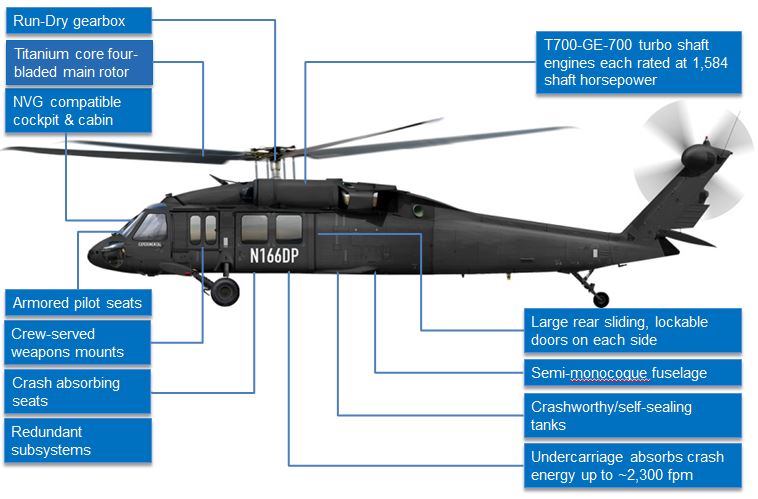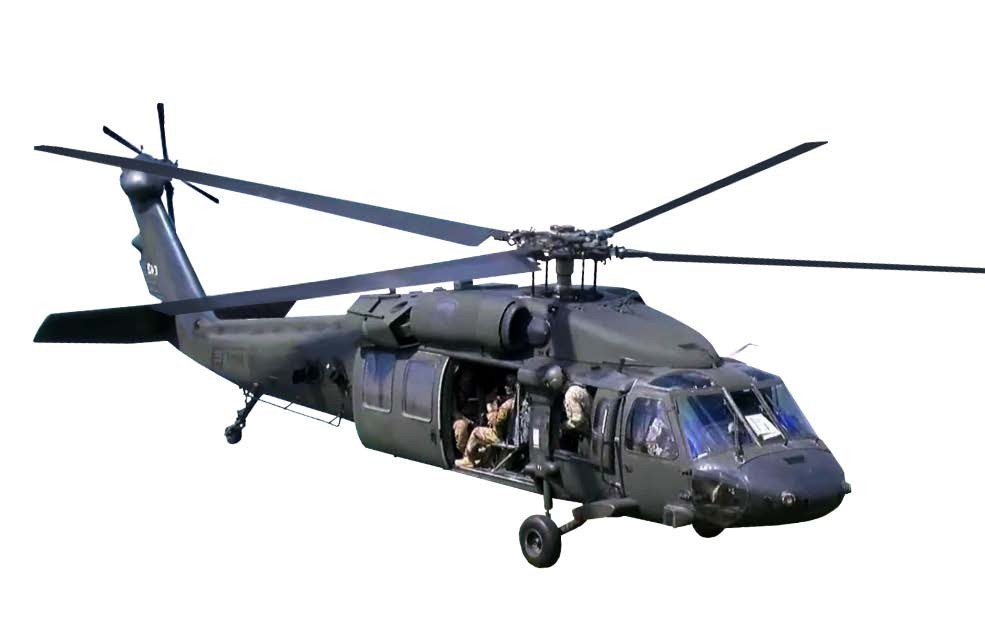Breaking Down the UH 60's Influence on Global Defense Strategies and Procedures
Breaking Down the UH 60's Influence on Global Defense Strategies and Procedures
Blog Article
UH-60: Technologies in Modern Helicopter Design
The UH-60 helicopter stands as a benchmark in modern aviation, showcasing considerable advancements in layout and innovation that provide to the developing demands of army operations. As we explore the advancement and vital advancements of the UH-60, it becomes important to take into consideration just how these developments affect not only existing applications however additionally the future landscape of helicopter design.

Evolution of the UH-60
The evolution of the UH-60 Black Hawk helicopter stands for a considerable turning point in aerospace engineering and army air travel. Presented in the late 1970s, the UH-60 was developed by Sikorsky Airplane to fulfill the USA Military's need for a functional utility helicopter efficient in doing a variety of missions. Its style stressed rate, ability to move, and sturdiness, establishing new criteria for functional efficiency.
The UH-60 features a distinct four-blade rotor system, which boosts lift and stability, allowing it to run properly in varied atmospheres. Its airframe is built from sophisticated composite materials, adding to a reduction in weight while preserving structural honesty. The helicopter's design also integrates better the rules of aerodynamics, which enhances gas efficiency and raises range.
For many years, the Black Hawk has gone through numerous upgrades to boost its capacities, consisting of boosted engines, advanced trip control systems, and modular systems for simple maintenance and versatility. The helicopter's capability to carry out goals ranging from troop transport to medical discharge has actually strengthened its role as a backbone of united state military operations. The UH-60 Black Hawk remains a prime example of just how advancement in helicopter style can considerably impact army efficiency and operational adaptability.
Advanced Avionics Equipments
Innovations in avionics systems have actually transformed the capabilities of modern-day helicopters like the UH-60 Black Hawk, improving functional effectiveness and situational understanding (UH 60). The assimilation of advanced avionics permits for boosted interaction, navigation, and flight management, making the UH-60 much more flexible in varied objective accounts
One of the key attributes is the advanced electronic cockpit, which utilizes multifunction display screens that offer real-time information, ensuring pilots have immediate access to crucial trip information. This streamlining of information lessens pilot workload and improves decision-making processes throughout facility operations. Furthermore, the incorporation of GPS and inertial navigation systems makes it possible for precise positioning and course planning, improving goal execution in challenging environments.
Furthermore, advanced avionics systems improve interaction abilities through safe and secure data links and voice interaction systems, enabling seamless control with ground forces and various other aircraft. The integration of automatic flight control systems even more contributes to improved stability and control, particularly in damaging climate problems or during low-altitude maneuvers.
Engine and Performance Enhancements
Engine efficiency in contemporary helicopters has actually taken a substantial jump forward, driven by technologies that boost effectiveness, power, and integrity. At the forefront of these advancements is the adoption of even more powerful turboshaft engines, particularly those using advanced products and technologies that make it possible for higher temperature resistances and enhanced thrust abilities. The UH-60 Black Hawk, as an example, uses the T700-GE-701C engine, which includes a dual-channel, full-authority electronic engine control system. This system improves performance while maximizing fuel intake and decreasing upkeep requirements.
In addition, the assimilation of engine health and wellness monitoring systems allows for real-time diagnostics and predictive maintenance, substantially boosting functional reliability. These systems not only sharp teams to potential concerns before they come to be important but likewise help with more reliable upkeep organizing, thereby decreasing downtime.

Products and Structural Innovations
Current developments in products and structural style have actually revolutionized modern-day helicopter building, boosting both performance and longevity. The intro of advanced composite materials, such as carbon fiber strengthened polymers, has actually dramatically lowered weight while keeping structural integrity. This shift not just enhances gas effectiveness however likewise increases haul capability, permitting helicopters like the UH-60 to carry out more diverse goals.
Additionally, developments in aluminum alloys and titanium components have added to enhanced resistance to corrosion and fatigue, expanding the life expectancy of important airframe components. The critical use of these materials has actually resulted in a reduction in upkeep demands and improved overall operational readiness.

Moreover, the integration of computer-aided style (CAD) and additive manufacturing modern technologies has made it possible for a lot more lightweight structures and complicated geometries, optimizing the wind resistant efficiency of helicopter styles. These developments promote fast prototyping and production, permitting manufacturers to respond promptly to advancing goal demands.
Security and Survivability Features
Security and survivability functions in contemporary helicopter layout have actually come to be extremely important, mirroring the boosting needs for objective performance in difficult atmospheres. The UH-60 Black Hawk, a significant instance, incorporates sophisticated technologies to read review boost team and passenger protection. One Full Report of the most vital developments is the incorporation of crashworthy gas systems developed to lessen the danger of fire throughout impact. Furthermore, the airframe is built with enhanced products that soak up and dissipate energy, more shielding passengers in the occasion of a crash.
The helicopter also employs a ballistic security system, that includes armored staff seats and crucial systems shielding, reducing vulnerability to tiny arms fire and shrapnel. Boosted situational recognition is achieved via advanced avionics and sensor innovations, permitting pilots to find and stay clear of hazards effectively.
Moreover, the assimilation of redundancy in essential systems-- such as dual engines and several trip control channels-- guarantees ongoing procedure also if one system falls short. The UH-60 is furnished with innovative emergency situation flotation protection devices, boosting survivability in water landings. Collectively, these features not only improve the security of personnel but also enhance goal success prices in aggressive settings, showing the commitment to excellence in helicopter design.
Verdict
The UH-60 helicopter stands for a significant innovation in modern air travel technology, visit this website integrating innovative materials, sophisticated avionics, and robust security attributes. In general, the UH-60 offers as a benchmark for future developments in helicopter layout, embodying resilience and flexibility in modern army operations.
The UH-60 helicopter stands as a criteria in modern air travel, showcasing significant innovations in style and modern technology that provide to the evolving needs of armed forces operations. As we explore the development and essential advancements of the UH-60, it becomes vital to think about how these growths affect not just present applications yet additionally the future landscape of helicopter layout.
Introduced in the late 1970s, the UH-60 was created by Sikorsky Aircraft to satisfy the United States Military's demand for a flexible utility helicopter qualified of performing a range of objectives. The UH-60 Black Hawk remains a prime instance of how technology in helicopter style can substantially influence military performance and functional flexibility.
On the whole, the UH-60 offers as a benchmark for future developments in helicopter layout, personifying resilience and flexibility in modern military operations.
Report this page